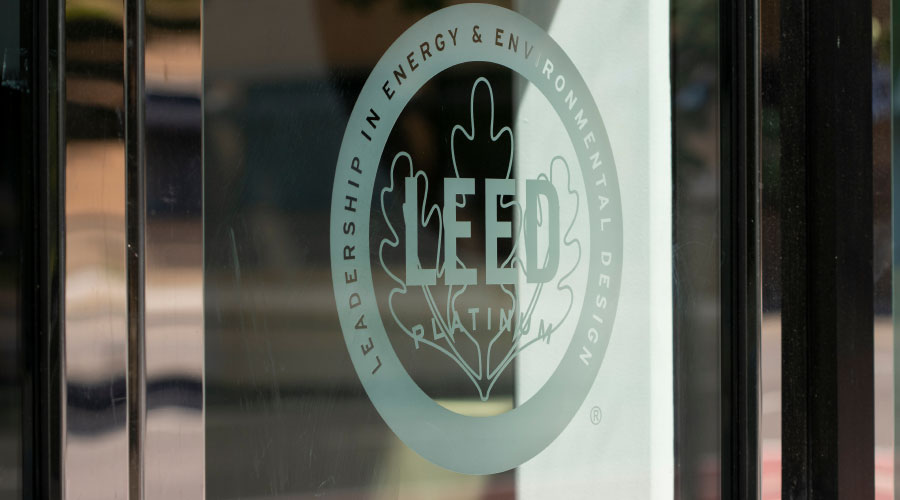Improved Energy Performance is One of Many Goals for New LEED-EBOM
By Greg Zimmerman, Executive Editor
OTHER PARTS OF THIS ARTICLEPt. 1: This Page
The new version of LEED-EBOM (that’s LEED for Existing Buildings, Operations and Maintenance) will require improved energy performance for any building hoping to achieve LEED certification.
The current version of LEED-EBOM — known as LEED 2009 — requires that a building achieve an Energy Star score of 69 to receive any level of certification. That’s specified under Energy and Atmosphere (EA) Prerequisite 2: Minimum Energy Efficiency Performance. Additional LEED points, then, are awarded (per EA Credit 1: Optimize Energy Efficiency Performance) to projects for performance over that 69 score — for instance, if a building is an 80 Energy Star, it gets 10 points; if 93, 17 points, etc.
But with the new version of LEED due out this fall (to be released at Greenbuild, Nov. 20-22 in Philadelphia) know as LEEDv4, any project hoping to achieve any LEED-EBOM certification will need an Energy Star score of 75. The reason USGBC is raising the bar, they’ve said, is simply to ensure that LEED continues to be a leadership standard, resulting in buildings that are in the top tier of energy and environmental performance.
There is, however, a caveat. The U.S. Green Building Council (USGBC) recognizes that many buildings that are poor energy performers also have the greatest opportunities for improving efficiency — and therefore reducing emissions and contributing to the common good. And USGBC doesn’t want to leave those buildings out of the LEED-EBOM program.
So USGBC offers an alternate path to certification. Currently, this path is available as a pilot credit known as Energy Jumpstart (Pilot Credit 67). Pilot credits are optional additional credits to LEED that USGBC uses to test the efficacy of certain strategies. The Energy Jumpstart pilot credit says that if a building can demonstrate a 20 percent improvement in energy efficiency over an established baseline in a 12-month period, it can still receive LEED certification — but only at the Certified level. Again, it’s USGBC’s hope that this alternate path to complying with the Minimum Energy Efficiency Performance prerequisite will make LEED-EBOM more attractive to facility managers who may have assumed that their energy hog building eliminated them as a candidate for LEED-EBOM certification. If a building recertifies down the road, and is able to achieve the 75 Energy Star score, it can then improve its level of certification as well.
Currently, LEED-EBOM requires project teams to recertify at least every five years. That won’t change with the new version of LEED-EBOM, but what will change are the requirements for resubmitting paperwork for recertification. LEED-EBOM rating system will be credits divided into “Establishment” and “Performance” sections.
Here’s what that means: Many LEED-EBOM credits that require facility managers to write a follow a policy — Sustainable Sites 6: Stormwater Quantity Control, for instance. The policy part of the credit is the Establishment part, and under the new version of LEED-EBOM, facility managers will not have to resubmit the Establishment portion each time (unless the policy has changed significantly). The idea is to streamline the recertification process, making it easier on facility managers. Also, it helps ensure that the effect of recertification will be improved performance, and not just shuffling papers.
You can learn much more about the Performance and Establishment parts of each LEED-EBOM credit in USGBC’s Recertification Guide.
One final item of note: Because of the major changes, USGBC is offering a two-year grace period after LEEDv4 is released during which project teams (for LEED-EBOM or any LEED system) can choose whether to use LEED 2009 or LEEDv4. USGBC says it’s a way to ease the market into the new changes.
You can learn as much as you want to know about the updates to LEED at USGBC’s LEEDv4 website.
Related Topics:











